Post-Fed USD Price Action Setups: EUR/USD, GBP/USD, AUD/USD, USD/JPY - DailyFX
Post-Fed USD Price Action Setups: EUR/USD, GBP/USD, AUD/USD, USD/JPY - DailyFX |
- Post-Fed USD Price Action Setups: EUR/USD, GBP/USD, AUD/USD, USD/JPY - DailyFX
- 3 Triangle Patterns Every Forex Trader Should Know - DailyFX
- Here is a composite chart on how the stock market has performed on Powell's 13 FOMC days - ForexLive
- Bitcoin spikes higher... - ForexLive
- Canadian Dollar Price Outlook: BoC Holds, USD/CAD Rallies - DailyFX
| Post-Fed USD Price Action Setups: EUR/USD, GBP/USD, AUD/USD, USD/JPY - DailyFX Posted: 30 Oct 2019 12:33 PM PDT Post-Fed USD Talking Points:Fed Cuts – USD Rips to Resistance, then DipsToday brought the FOMC's October rate decision and a cut had been long expected at this meeting, likely explaining the meager initial move that showed after the statement dropped at 2pm. The Federal Reserve cut rates by 25 basis points, marking the third such move over the past three meetings. The Dollar began to gain during the accompanying press conference, pushing back up to a key area of resistance on the chart; after which sellers pounced to push USD right back down. The big question at this point is what's next? In the most recent Summary of Economic Projections in September, the FOMC had said that they saw as many as one more cut in 2019. Well, that happened today and there's one more Fed meeting this year, so questions abound about what might happen at that final 2019 rate decision. At today's press conference accompanying the rate decision, FOMC Chair Jerome Powell seemed to indicate that the bank was in a wait-and-see mode before committing to any future moves, and focus around the Fed now moves to the December rate decision. But before we get to that, there's more data to work with this week as well as a BoJ rate decision later tonight. On the US data front, tomorrow's economic calendar brings the Fed's preferred inflation gauge of PCE and Friday morning brings Non-Farm Payrolls. DailyFX Economic Calendar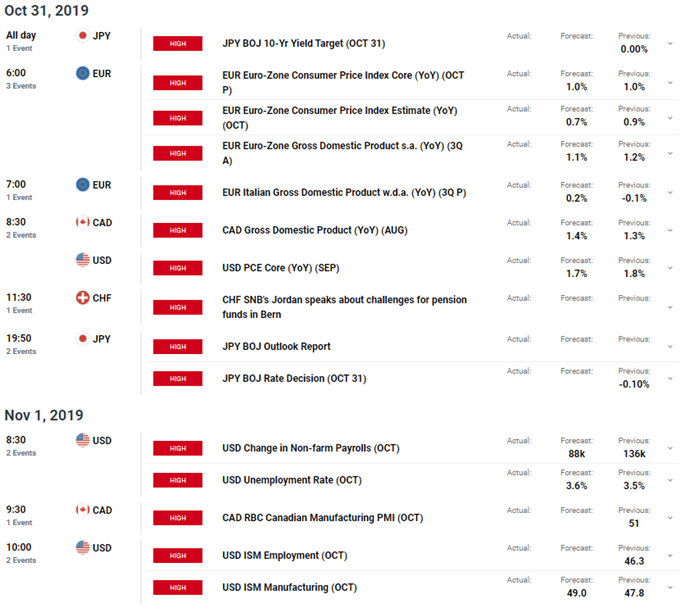 Data taken from DailyFX Economic Calendar US Dollar Price Action in Precarious Spot Ahead of Big DriversThe US Dollar has already put in an interesting Q4 and the next couple of days will likely keep the currency on the move. The longer-term backdrop here keeps focus on the bearish side of the currency, as a stark sell-off developed in early-October just after the USD set a fresh two-year-high. That sell-off saw prices tip-below the support side of a longer-term rising wedge formation, which will often be approached for bearish reversals. Curiously, it wasn't the Fed or the recent dovish pivot that brought sellers into the mix, as each of those prior FOMC rate cuts were simply shrugged off. Just hours after the July cut, which was the first move of softening out of the Fed in over a decade, the USD pushed up to a fresh two-year-high. The same thing happened weeks after the September cut, and it wasn't until US data began to dim in early-October trade that short-sellers had a more pronounced effect. US Dollar Daily Price Chart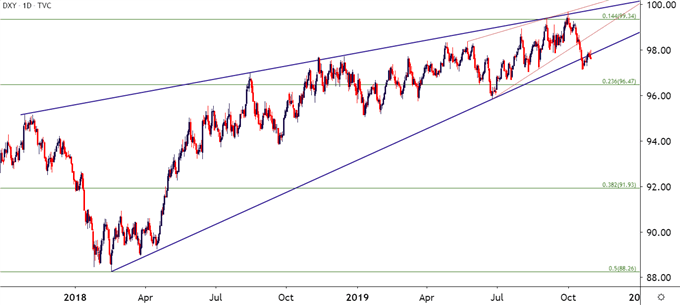 Chart prepared by James Stanley; US Dollar on Tradingview As looked at earlier this morning, the US Dollar had pushed up to lower-high resistance at a key area on the chart. Around today's FOMC cut, prices initially moved up to re-test a key zone of short-term resistance. US Dollar Four-Hour Price Chart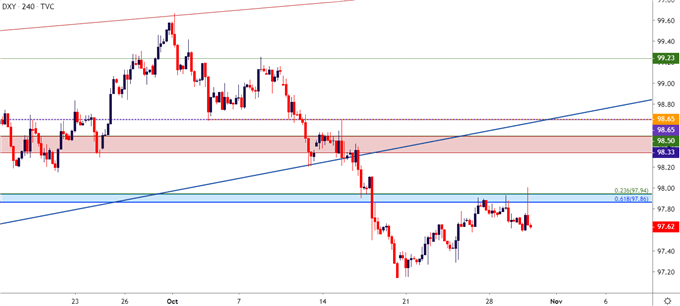 Chart prepared by James Stanley; US Dollar on Tradingview EUR/USD Sellers Take a Swing, Find Fibonacci SupportWith the late-showing of USD strength during the accompanying press conference EUR/USD sellers began to push-lower on the chart. Support soon showed at a familiar level around 1.1082, which is the 38.2% Fibonacci retracement of the June-October bearish move. The lower-highs that have shown over the past week going along with that horizontal support zone can begin to open the door for bearish scenarios in EUR/USD; and if USD-strength does stick around on the basis of a less-dovish FOMC, the 1.1000 level could be sought for that next stop of key support. EUR/USD Two-Hour Price Chart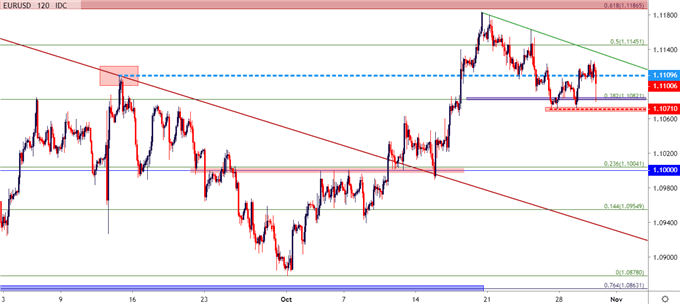 Chart prepared by James Stanley; EURUSD on Tradingview GBP/USD Tip-Toes Out of Bull Flag Formation, Holds ResistanceAt this stage the FOMC response in GBP/USD has been rather mild and unable to break the recent trend in the pair. Mid-October brought a strong bullish move into the mix as some positive developments showed on the Brexit-front and this helped the pair scale all the way up to the 1.3000 psychological level. Buyers haven't yet shown much tolerance for prices above that 1.3000 level and since then a bull flag formation had developed. Price action has tip-toed out of that formation, with a bit of follow-through resistance showing around the 1.2900 level. GBP/USD can remain of interest for short-USD strategies, looking for a re-test of that 1.3000 big figure. GBP/USD Two-Hour Price Chart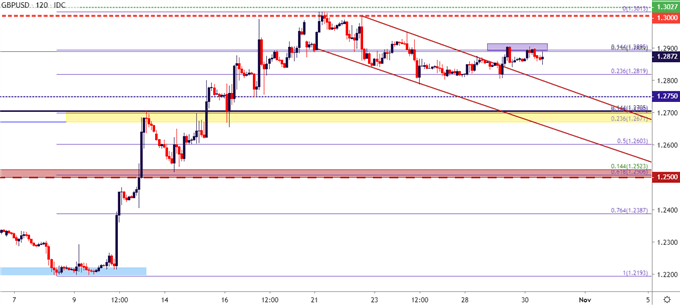 Chart prepared by James Stanley; GBPUSD on Tradingview USD/JPY: Breakout or Fake-Out?On the long side of the US Dollar, I've been following USD/JPY as one of the more attractive possible venues. On the back of that flare of strength in the USD, prices in the pair jumped up to a fresh two-month-high while crossing above the 109.00 level. This keeps the door open for bullish scenarios in the pair, looking for topside targets in the 109.67-110.00 area on the chart. I had discussed this setup at length on webinars over the past two weeks, most recently yesterday to explain some of the backdrop behind levels/zones in the current backdrop on the pair. USD/JPY Four-Hour Price Chart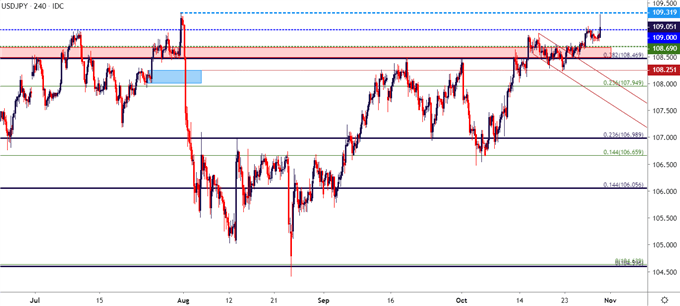 Chart prepared by James Stanley; USDJPY on Tradingview AUD/USD: Bearish Potential on Hold of Key ResistanceAlso on the long side of the US Dollar, AUD/USD can remain of interest as the pair remains inside of a key zone of resistance. The pair has seen a strong bearish trend propel prices down to fresh decade-lows in early-August trade. Selling pressure dried up below the .6700 handle, however, and bears have been thwarted on three separate attempts to leave that level behind since then. In early-September, this led to a strong bounce up towards the .6900 handle: In early-October, a similar albeit less-aggressive scenario had shown. Price action is currently testing the 50% marker of the July-August sell-off which is confluent with both the October swing-highs as well as the bearish trend-line projection derived from Sept-Oct highs. This can keep the door open for short-side scenarios in the pair, particularly should USD-strength stick around after today's rate decision with so much US data punctuating the economic calendar. AUD/USD Four-Hour Price Chart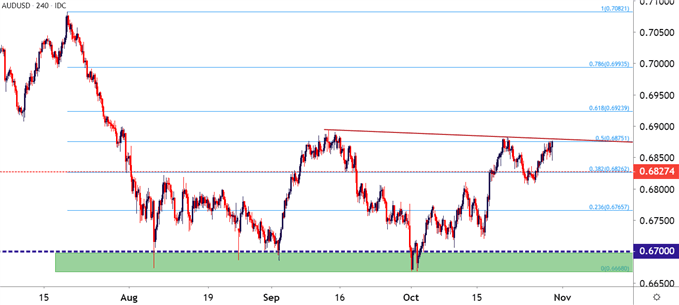 Chart prepared by James Stanley; AUDUSD on Tradingview To read more:Are you looking for longer-term analysis on the U.S. Dollar? Our DailyFX Forecasts have a section for each major currency, and we also offer a plethora of resources on Gold or USD-pairs such as EUR/USD, GBP/USD, USD/JPY, AUD/USD. Traders can also stay up with near-term positioning via our IG Client Sentiment Indicator. Forex Trading Resources DailyFX offers an abundance of tools, indicators and resources to help traders. For those looking for trading ideas, our IG Client Sentiment shows the positioning of retail traders with actual live trades and positions. Our trading guides bring our DailyFX Quarterly Forecasts and our Top Trading Opportunities; and our real-time news feed has intra-day interactions from the DailyFX team. And if you're looking for real-time analysis, our DailyFX Webinars offer numerous sessions each week in which you can see how and why we're looking at what we're looking at. If you're looking for educational information, our New to FX guide is there to help new(er) traders while our Traits of Successful Traders research is built to help sharpen the skill set by focusing on risk and trade management. --- Written by James Stanley, Strategist for DailyFX.com Contact and follow James on Twitter: @JStanleyFX |
| 3 Triangle Patterns Every Forex Trader Should Know - DailyFX Posted: 30 Oct 2019 01:07 AM PDT 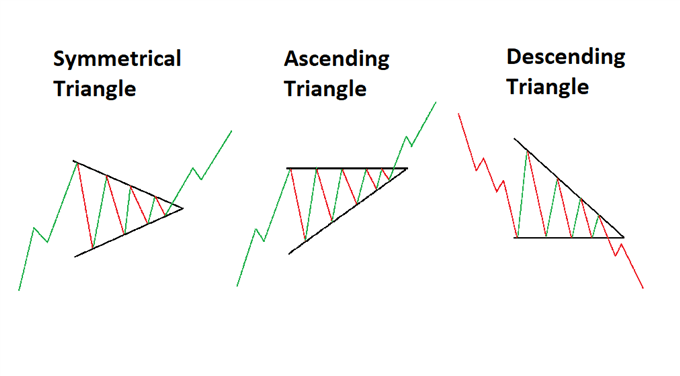 Triangle patterns have three main variations and appear frequently in the forex market. These patterns provide traders with greater insight into future price movement and the possible resumption of the current trend. However, not all triangle formations can be interpreted in the same way, which is why it is essential to understand each triangle pattern individually. Forex triangle patterns main talking points:
Test your knowledge of forex patterns with our interactive Forex Trading Patterns quiz What is a triangle pattern?A forex triangle pattern is a consolidation pattern that occurs mid-trend and usually signals a continuation of the existing trend. The triangle chart pattern is formed by drawing two converging trendlines as price temporarily moves in a sideways direction. Traders often look for a subsequent breakout, in the direction of the preceding trend, as a signal to enter a trade. 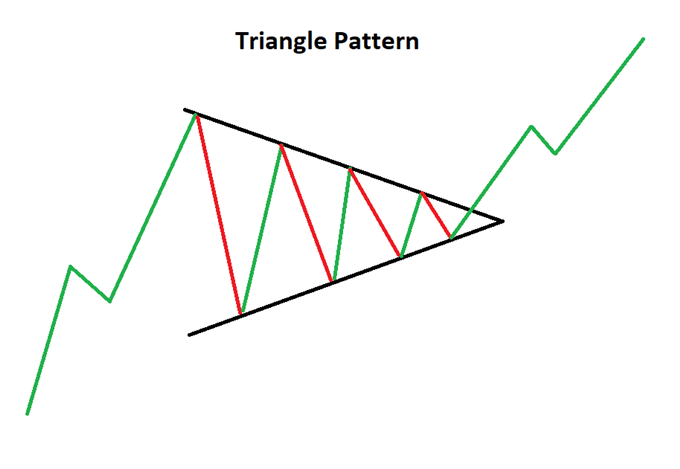 This article makes use of line chart illustrations to present the three triangle chart patterns. Traders ought to familiarize themselves with the three technical analysis charts and figure out which one suits them best, although, most prefer using forex candlestick charts. Symmetrical TrianglesThe symmetrical triangle can be viewed as the starting point for all variations of the triangle pattern. As the name suggests, a triangle can be seen after drawing two converging trendlines on a chart. The difference between the symmetrical and the other triangle patterns is that the symmetrical triangle is a neutral pattern and does not lean in any direction. While the triangle itself is neutral, it still favors the direction of the existing trend and traders look for breakouts in the direction of the trend. 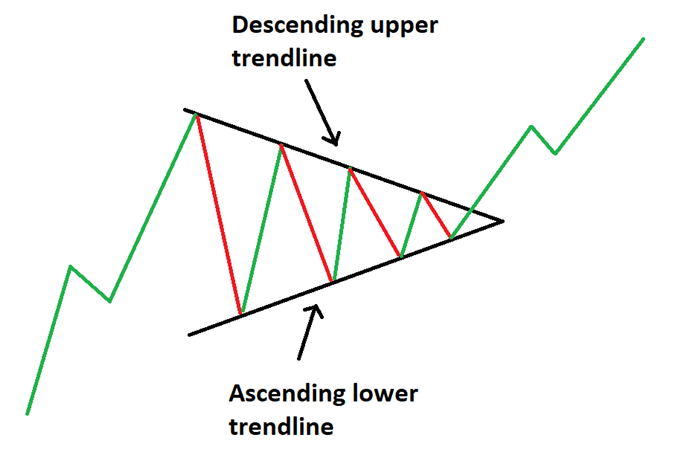 Symmetrical triangle trading strategy Triangles provide an effective measuring technique for trading the breakout, and this technique can be adapted and applied to the other variations as well. The AUD/USD chart below shows the symmetrical triangle. The vertical distance between the upper and lower trendline can be measured and used to forecast the appropriate target once price has broken out of the symmetrical triangle. Its important to note that finding the perfect symmetrical triangle is extremely rare and that traders should not be too hasty to invalidate imperfect patterns. Traders ought to understand that triangle analysis is less about finding the perfect pattern and more about understanding what the market is communicating, through price action. 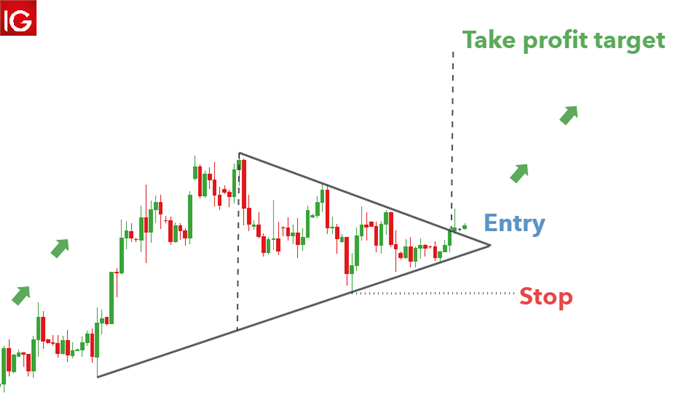 Ascending Triangle PatternThe ascending triangle pattern is similar to the symmetrical triangle except that the upper trendline is flat and the lower trendline is rising. This pattern indicates that buyers are more aggressive than sellers as price continues to make higher lows. Price approaches the flat upper trendline and with more instances of this, the more likely it is to eventually break through to the upside. 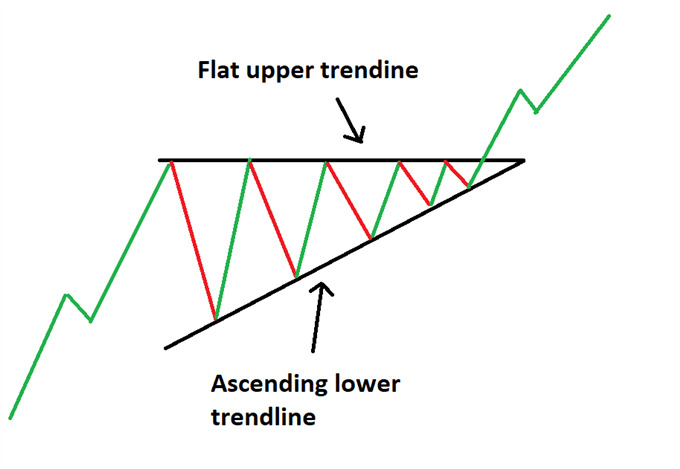 Ascending triangle trading strategy An ascending triangle can be seen in the US Dollar Index below. Leading on from the existing uptrend, there is a period of consolidation that forms the ascending triangle. Traders can once again measure the vertical distance at the beginning of the triangle formation and use it at the breakout to forecast the take profit level. In this example, a rather tight stop can be placed at the recent swing low to mitigate downside risk. 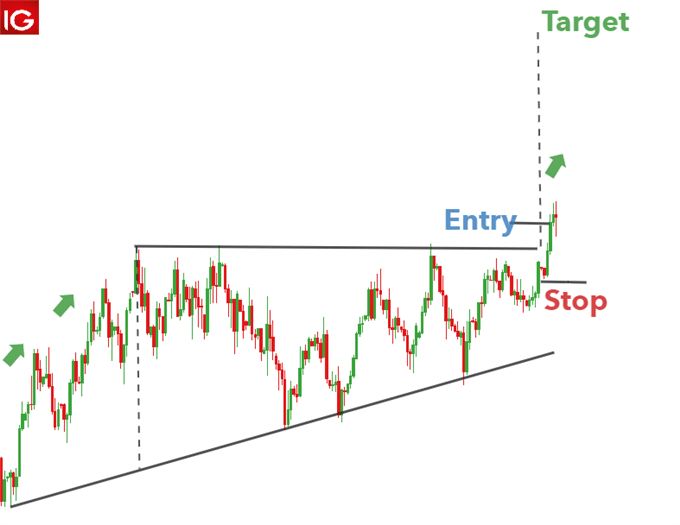 Descending Triangle PatternThe descending triangle pattern on the other hand, is characterized by a descending upper trendline and a flat lower trendline. This pattern indicates that sellers are more aggressive than buyers as price continues to make lower highs. 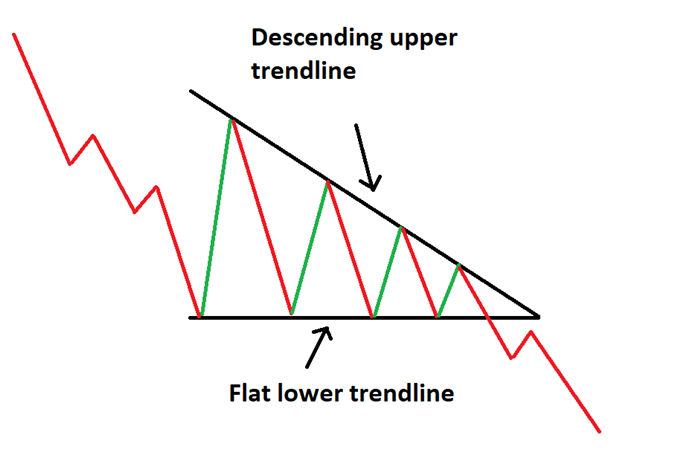 Descending triangle trading strategy Below is a good example of the descending triangle pattern appearing on GBP/USD. A downtrend leads into the consolidation period where sellers outweigh buyers and slowly push price lower. A strong break of the lower trendline presents traders with an opportunity to go short. In this example, it doesn't take long for the position to move in the opposite direction, highlighting the importance of setting an appropriate stop level. The take profit level is set using the vertical distance measured at the beginning of the descending triangle formation. 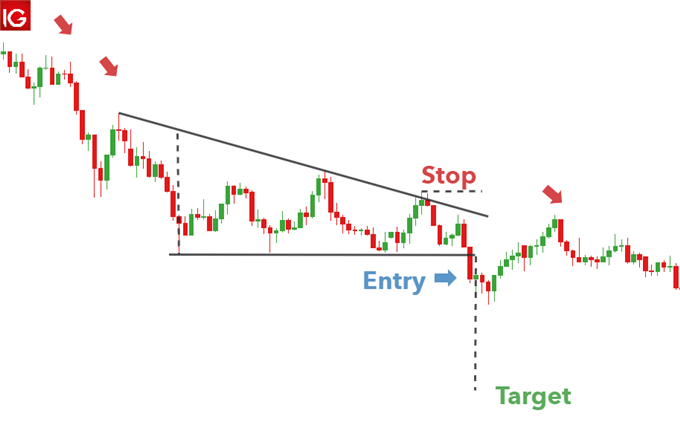 Trading with Triangle Patterns: Key things to remember
Further Reading on Forex Trading Patterns |
| Posted: 30 Oct 2019 10:31 AM PDT [unable to retrieve full-text content]Here is a composite chart on how the stock market has performed on Powell's 13 FOMC days ForexLive |
| Bitcoin spikes higher... - ForexLive Posted: 25 Oct 2019 09:19 AM PDT [unable to retrieve full-text content]Bitcoin spikes higher... ForexLive |
| Canadian Dollar Price Outlook: BoC Holds, USD/CAD Rallies - DailyFX Posted: 30 Oct 2019 07:13 AM PDT Canadian Dollar Talking Points:Bank of Canada Holds Rates SteadyThe Canadian Dollar has been on the move so far in Q4. And when coupled with a weak US Dollar as the US currency began to reverse in the opening days of the fourth quarter, a strong trend had developed in USD/CAD that pushed the pair very near yearly lows. At today's Bank of Canada rate decision, the BoC held rates as was widely-expected. CAD weakness did show up on the back of the statement, however, as the Bank of Canada has grown more cautious around global growth. Taken from this morning's statement, 'Growth in Canada is expected to slow in the second half of this year to a rate below its potential.' The full statement can be read here: Bank of Canada October Interest Rate Decision. Coming into this week, USD/CAD was sticking to a bearish trend that had pushed the pair down to fresh three-month-lows, with buyers finally stepping in ahead of the July swing sitting just above the 1.3000 psychological level. As looked at in yesterday's webinar, a pullback to find resistance around prior support, taken from the 1.3132 Fibonacci level, could soon re-open the door for bearish trend strategies, looking for that eventual re-test of the 1.3000 handle. USD/CAD Four-Hour Price Chart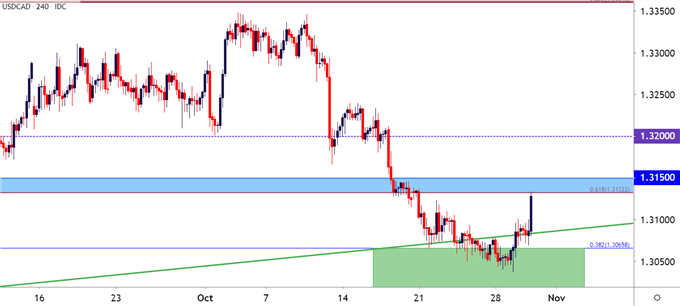 Chart prepared by James Stanley; USDCAD on Tradingview As looked at last week, USD/CAD was nearing a big area of confluent support. And while it took a couple of days for buyers to respond, the fact remains that continuation could still show in that theme after USD/CAD has clawed back a portion of those prior losses. USD/CAD Daily Price Chart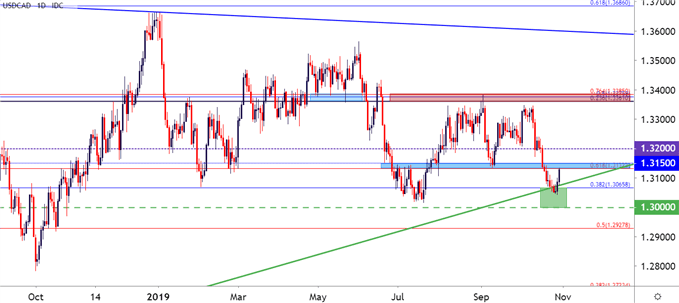 Chart prepared by James Stanley; USDCAD on Tradingview This leads into a widely-expected rate cut from the FOMC later today. Markets are pricing in a greater than 95% chance of another rate cut from the Fed but, as has become usual, the big focus will be on what the bank alludes to for near-future monetary conditions. If the FOMC takes on a similar tone of stability as what was shown over the prior two cuts, USD-strength may stick around for a bit as shorts cover. This could further push USD/CAD up to resistance levels around the 1.3200 handle. In each potential instance, rallies could be attractive for fades, looking for an eventual re-test of the 1.3000 handle at fresh yearly lows, targeting bearish breakout potential. USD/CAD Two-Hour Price Chart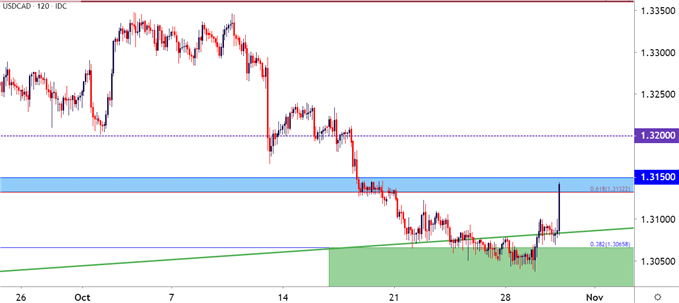 Chart prepared by James Stanley; USDCAD on Tradingview To read more: Are you looking for longer-term analysis on the U.S. Dollar? Our DailyFX Forecasts have a section for each major currency, and we also offer a plethora of resources on Gold or USD-pairs such as EUR/USD, GBP/USD, USD/JPY, AUD/USD. Traders can also stay up with near-term positioning via our IG Client Sentiment Indicator. Forex Trading Resources DailyFX offers an abundance of tools, indicators and resources to help traders. For those looking for trading ideas, our IG Client Sentiment shows the positioning of retail traders with actual live trades and positions. Our trading guides bring our DailyFX Quarterly Forecasts and our Top Trading Opportunities; and our real-time news feed has intra-day interactions from the DailyFX team. And if you're looking for real-time analysis, our DailyFX Webinars offer numerous sessions each week in which you can see how and why we're looking at what we're looking at. If you're looking for educational information, our New to FX guide is there to help new(er) traders while our Traits of Successful Traders research is built to help sharpen the skill set by focusing on risk and trade management. --- Written by James Stanley, Strategist for DailyFX.com Contact and follow James on Twitter: @JStanleyFX |
| You are subscribed to email updates from "forex charts" - Google News. To stop receiving these emails, you may unsubscribe now. | Email delivery powered by Google |
| Google, 1600 Amphitheatre Parkway, Mountain View, CA 94043, United States | |
Comments
Post a Comment